We may receive a commission when you use our affiliate links. However, this does not impact our recommendations.
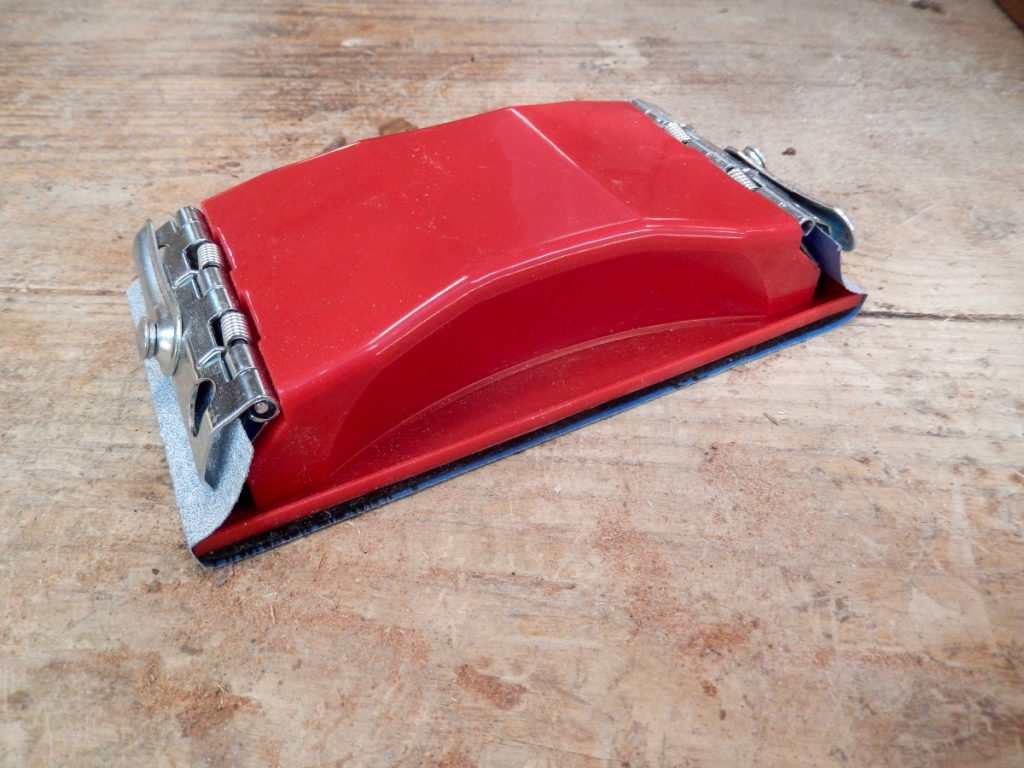 One of the most mundane – but important- tools in our toolbox is a sanding block. We, and I include here my students in grades four to twelve, are using our sanding blocks during the last stages of completing our projects. To me, sanding is the finale before applying a finish. After planing and scraping we can sand the surface using an electric sander, or a sanding block. Although I own a few sanders (belt, orbital, and a simple ¼” sheet one) I find myself using a sanding block quite often. My favorite block is the American-made Preppin’ Weapon Sanding Block. This sturdy tool is fun to work with, ergonomic, and hefty. It uses ¼” of sheet sandpaper strips, which are mounted on it using a stainless steel clamping mechanism. But as a top-notch tool, it is understandably not a cheap one as its average market price is $24. We have seven Preppin blocks in our program and they have witnessed quite a lot, including falling nose down onto our floor.
One of the most mundane – but important- tools in our toolbox is a sanding block. We, and I include here my students in grades four to twelve, are using our sanding blocks during the last stages of completing our projects. To me, sanding is the finale before applying a finish. After planing and scraping we can sand the surface using an electric sander, or a sanding block. Although I own a few sanders (belt, orbital, and a simple ¼” sheet one) I find myself using a sanding block quite often. My favorite block is the American-made Preppin’ Weapon Sanding Block. This sturdy tool is fun to work with, ergonomic, and hefty. It uses ¼” of sheet sandpaper strips, which are mounted on it using a stainless steel clamping mechanism. But as a top-notch tool, it is understandably not a cheap one as its average market price is $24. We have seven Preppin blocks in our program and they have witnessed quite a lot, including falling nose down onto our floor.
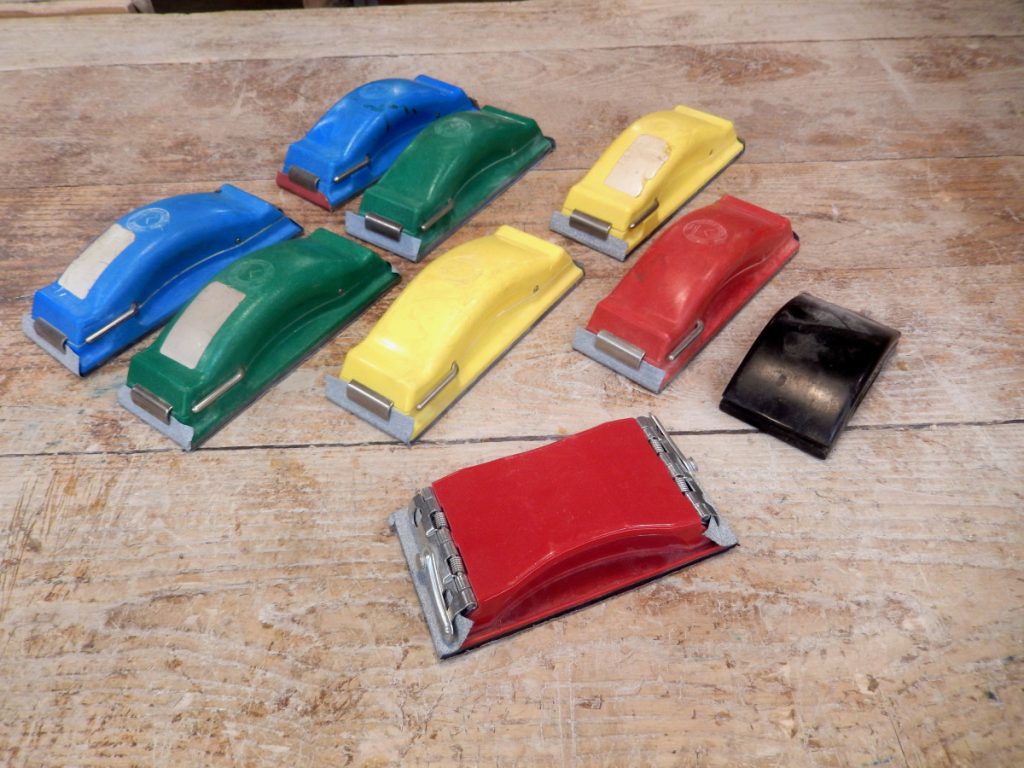
Here are our sading blocks: The best are our Preppin, which come in four distinct color options to assist in undefining the different grits of sandpaper that we mound on them. The black rubbery block is an old dinosaur from the shop’s past. This block was common in the pre Preppin days and is in my eyes is very inadequate. Our new and inexpensive new recruit is the red one in the foreground.
In my constant effort to find decent – but affordable additional sanding blocks to join our fleet I notices a $10 block on Amazon and decided to give it a try.
 This block which comes under many brand names and sellers (here’s one of them) is a hollow plastic sander with a stamped steel clamping tabs. I got ours last year and we have been using it ever since. While it is not as robust as the Preppin, I have to say that I quite like it. My students have been using it a lot, and although I anticipate (and still believe so) that its corners will break off after an accidental fall to the ground, this has yet to happen. The clamping tabs are working well and the rubbery sole underneath is still flexible and all in one piece.
This block which comes under many brand names and sellers (here’s one of them) is a hollow plastic sander with a stamped steel clamping tabs. I got ours last year and we have been using it ever since. While it is not as robust as the Preppin, I have to say that I quite like it. My students have been using it a lot, and although I anticipate (and still believe so) that its corners will break off after an accidental fall to the ground, this has yet to happen. The clamping tabs are working well and the rubbery sole underneath is still flexible and all in one piece.
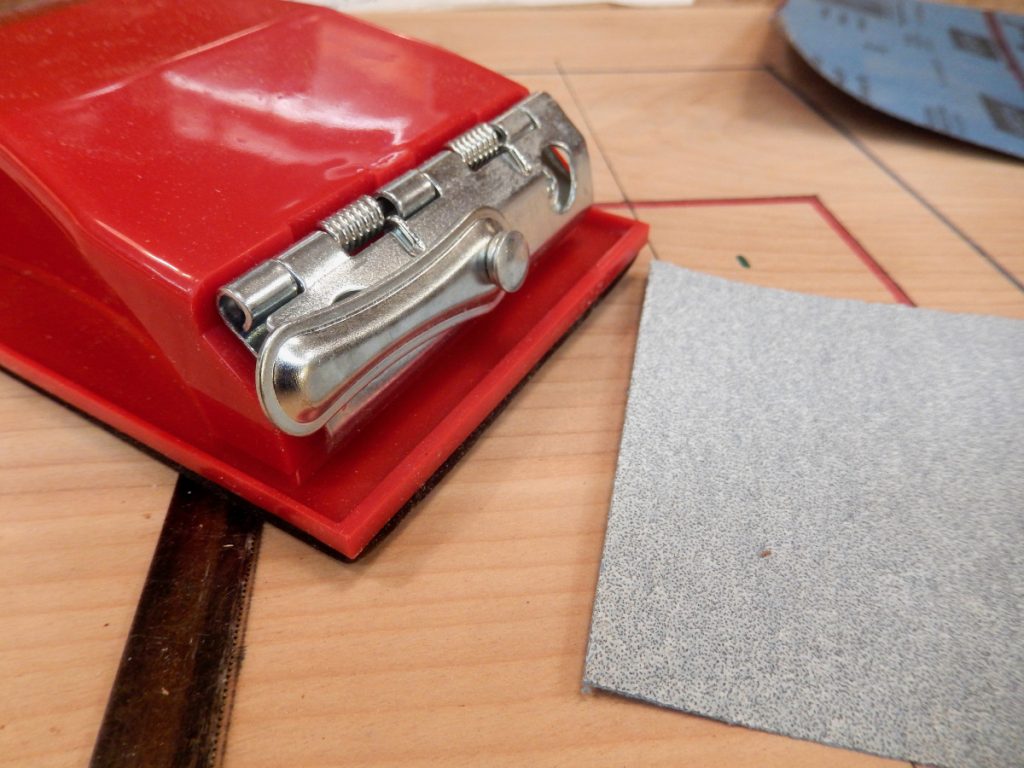
To mount a new strip of sandpaper: extend the spring clamp tab’s lever up.
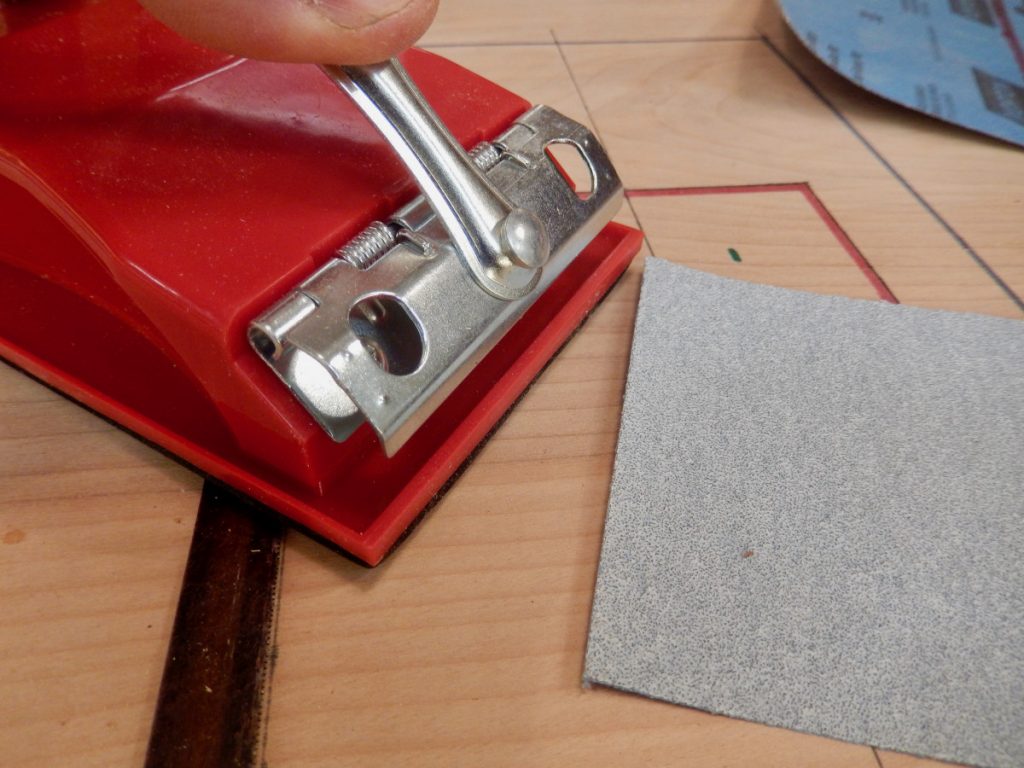
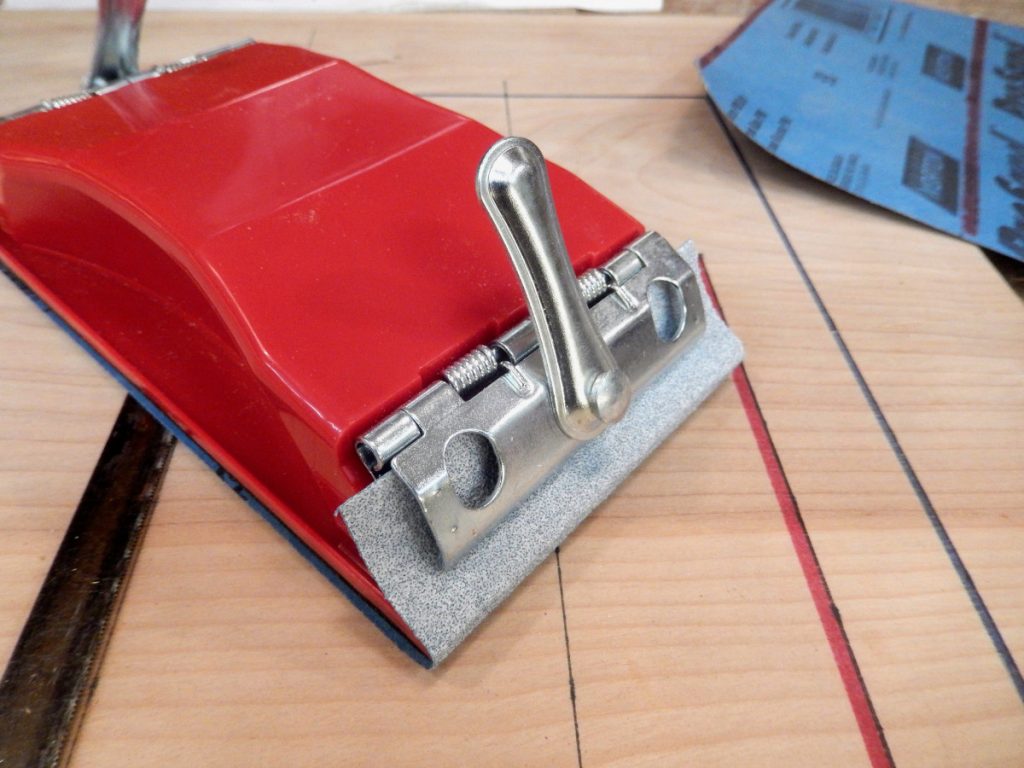
Tuck in the sandpaper end and let go of the lever.
The only annoying thing about it is that its surface doesn’t match the easy to cut ¼ strip – like the Preppin. To cut a strip that fits onto it you will have to divide a standard sheet of sanding paper into approximately three equal parts and snip off the excess length of each strip.
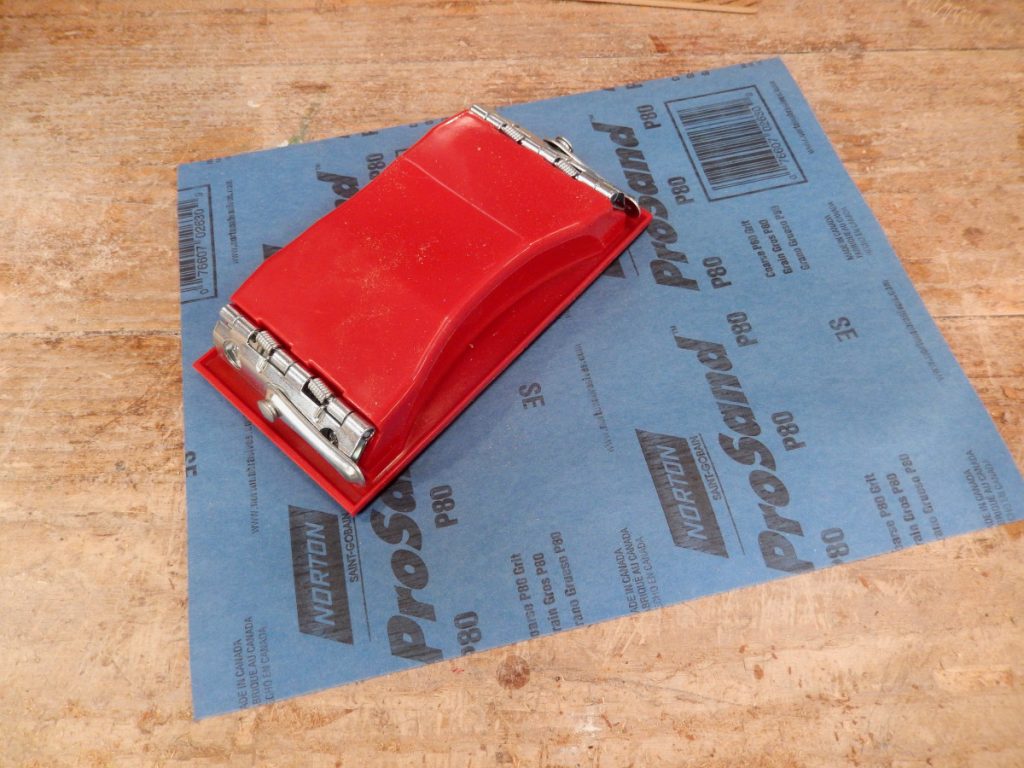
 I incorporate those sniped of excess paper into future detailed hand-sanding operations, but still, I would have preferred a more standard ¼ dimensions.
I incorporate those sniped of excess paper into future detailed hand-sanding operations, but still, I would have preferred a more standard ¼ dimensions.
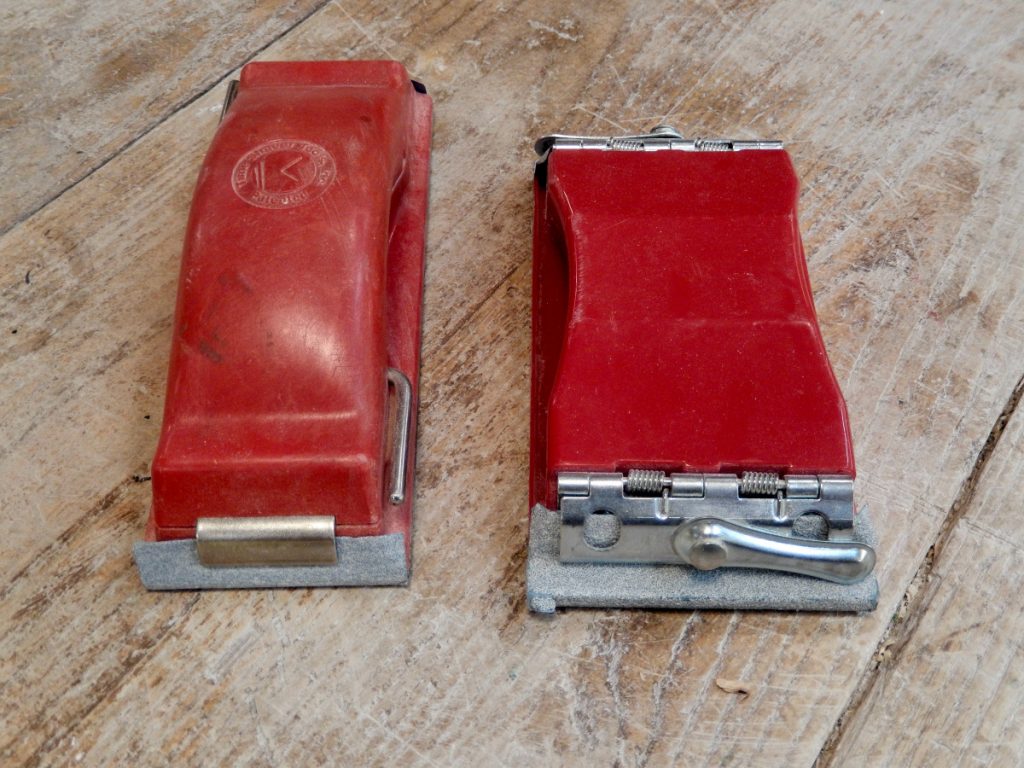
Side by side comparison of the Preppin and our new block.
Here are some supplies and tools we find essential in our everyday work around the shop. We may receive a commission from sales referred by our links; however, we have carefully selected these products for their usefulness and quality.








